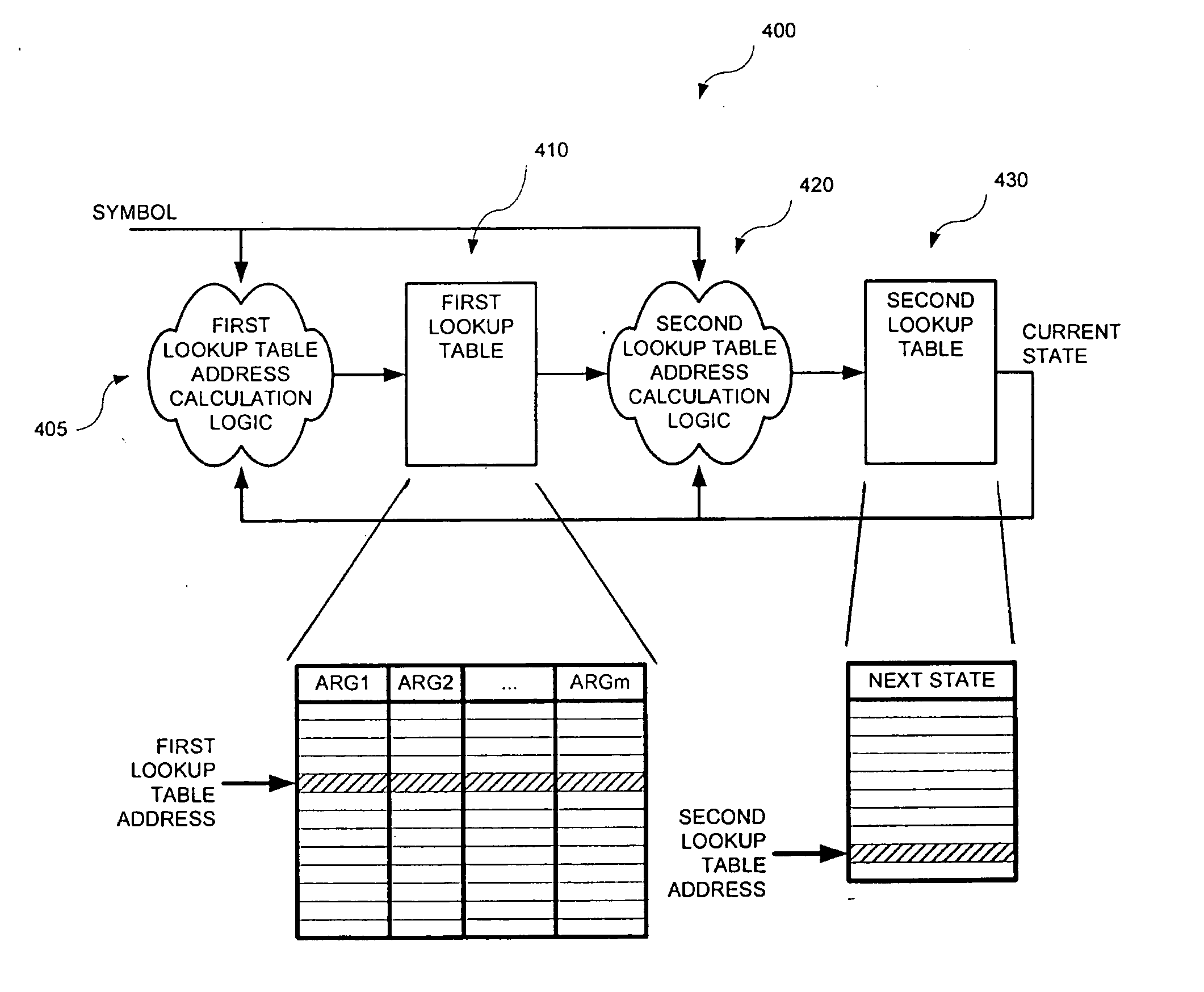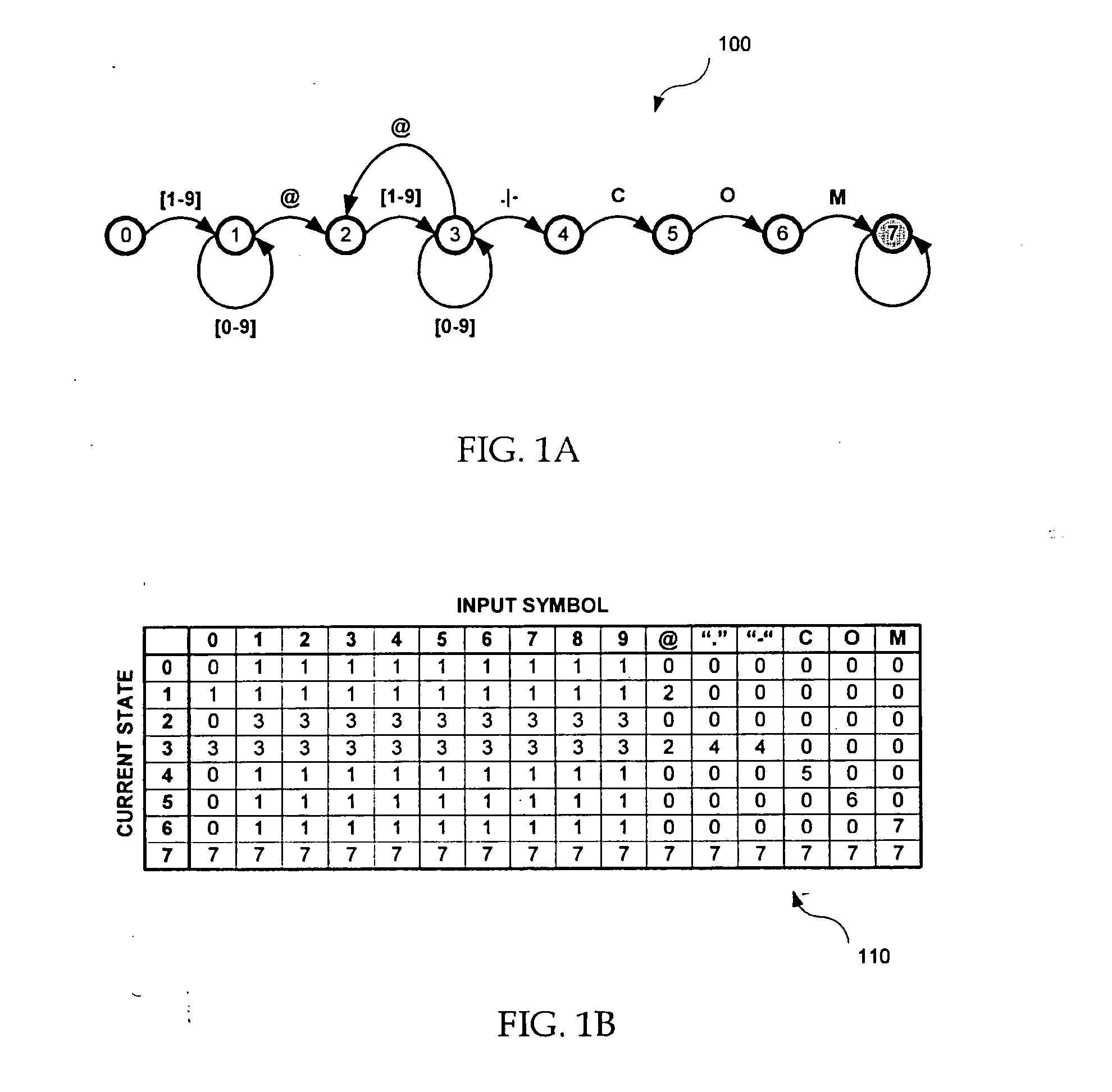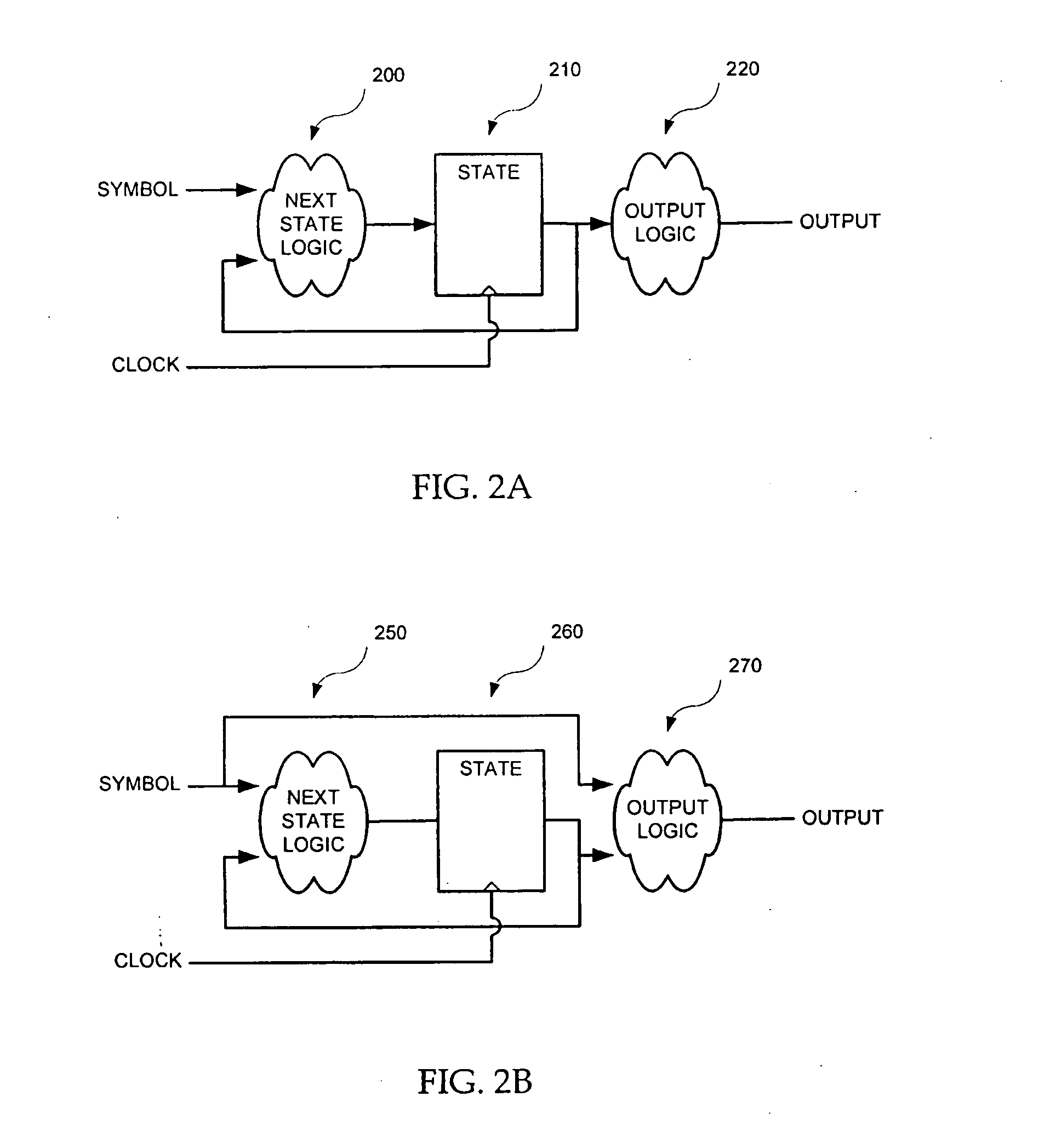Apparatus and method for large hardware finite state machine with embedded equivalence classes
a finite state machine and hardware technology, applied in the field of integrated circuits, can solve the problems of sacrificing content delivery or network security, increasing the amount of memory needed to store this data, and qos and signature-based security services finding it increasingly difficult to keep up with the demands of matching packet content,
- Summary
- Abstract
- Description
- Claims
- Application Information
AI Technical Summary
Benefits of technology
Problems solved by technology
Method used
Image
Examples
Embodiment Construction
FIG. 4 is a simplified high-level block diagram of a programmable finite state machine (FSM) 400, in accordance with one embodiment of the present invention. Programmable FSM 400 is shown as including a first address calculation logic 405, a first lookup table 410, a second address calculation logic 420, a second lookup table 430. As described further below, FSM 400 has a high throughput and uses a relatively smaller memory to store the state transitions data than those known in the prior art.
In the following, k is the number of bits required to represent each symbol, n is the number of bits required to represent each state within the FSM, and q is the number of bits used within each block when partitioning the FSM transition table. Thus, the total number of states is 2n, and each block contains 2q entries. For example, up to 256 symbols may be represented if k is equal to 8.
First address calculation logic 405 is configured to receive a k-bit input symbol data and an n-bit curren...
PUM
 Login to View More
Login to View More Abstract
Description
Claims
Application Information
 Login to View More
Login to View More - R&D
- Intellectual Property
- Life Sciences
- Materials
- Tech Scout
- Unparalleled Data Quality
- Higher Quality Content
- 60% Fewer Hallucinations
Browse by: Latest US Patents, China's latest patents, Technical Efficacy Thesaurus, Application Domain, Technology Topic, Popular Technical Reports.
© 2025 PatSnap. All rights reserved.Legal|Privacy policy|Modern Slavery Act Transparency Statement|Sitemap|About US| Contact US: help@patsnap.com



